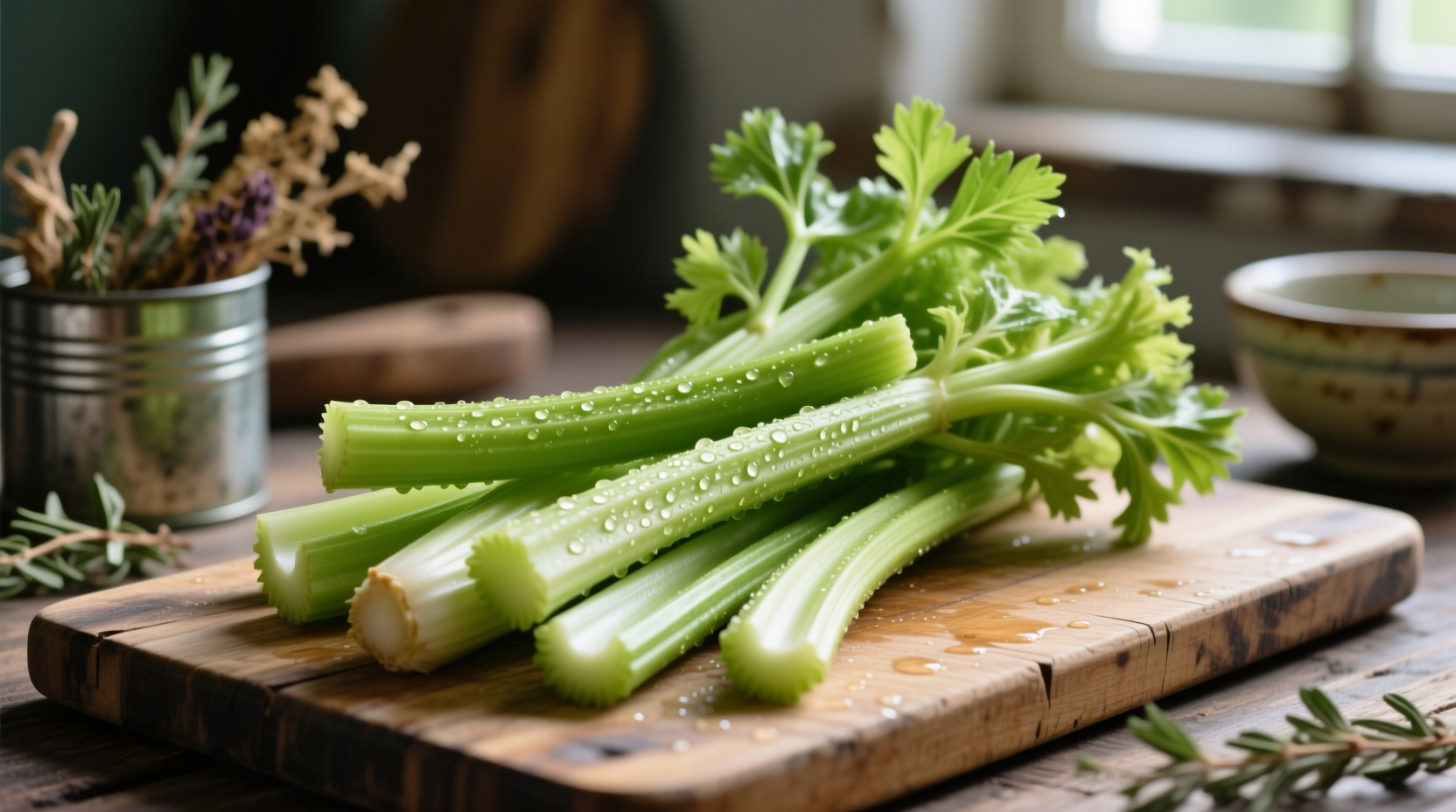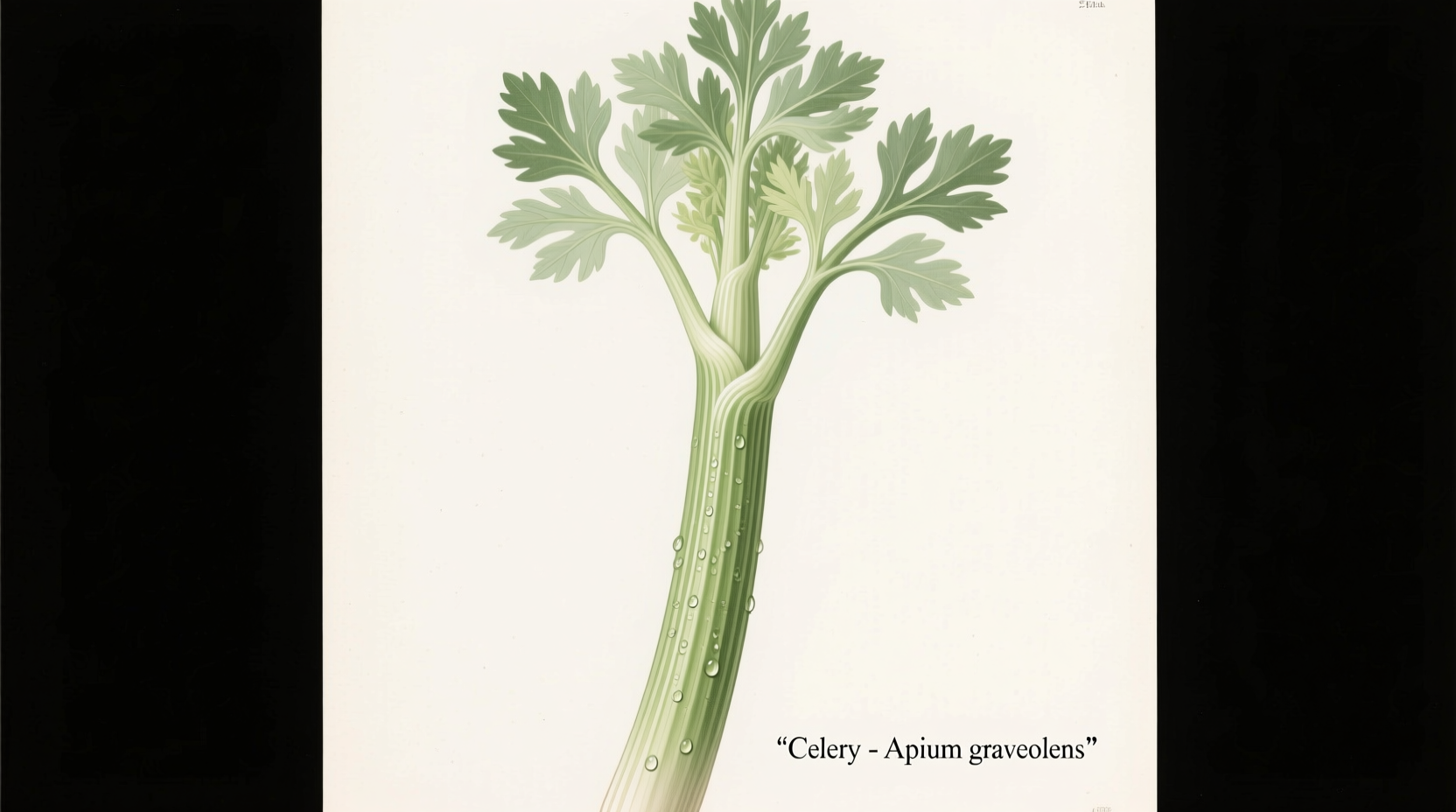Understanding exactly what constitutes a stalk of celery transforms how you shop, store, and cook with this versatile vegetable. Whether you're meal prepping, following a recipe, or optimizing your grocery budget, knowing the precise definition prevents confusion and waste. This guide delivers practical knowledge you can apply immediately in your kitchen.
What Exactly Is a Stalk of Celery? Clearing the Confusion
Despite common usage, the term "stalk" creates widespread misunderstanding. Botanically speaking, what most people call a "stalk of celery" is actually a petiole - a single rib or segment of the celery plant. The entire bundle you purchase at the store is technically the leafstalk or celery bunch.
| Common Term | Botanical Term | What It Actually Means |
|---|---|---|
| "Stalk of celery" | Petiole | One individual rib or segment |
| "Head of celery" | Leafstalk | The entire bundle of ribs |
| "Celery stick" | N/A | Cut portion of a single rib |
This terminology clarification matters because recipes often specify quantities like "2 stalks of celery," meaning two individual ribs, not two entire bundles. Misunderstanding this could completely throw off your dish's flavor balance.
Selecting the Perfect Celery Stalks
When choosing celery at the market, look for these quality indicators:
- Vibrant green color without yellowing or browning
- Firm, crisp texture that snaps cleanly when bent
- Tightly packed ribs with no separation between stalks
- Fresh-looking leaf ends without excessive wilting
Avoid celery with stringy, fibrous stalks or hollow centers, which indicate age and reduced flavor quality. The USDA Agricultural Research Service confirms that celery's crispness directly correlates with its water content and freshness.

Nutritional Powerhouse in Every Stalk
Each medium celery stalk (about 7.5 inches long) delivers impressive nutritional benefits with minimal calories:
- Only 10 calories per stalk
- 30% of daily vitamin K for blood health and bone density
- 260mg potassium supporting healthy blood pressure
- Dietary fiber aiding digestion and satiety
- Antioxidants including apigenin and luteolin
According to USDA FoodData Central, celery stalks contain unique phytonutrients that may help reduce inflammation. The National Institutes of Health notes these compounds show promising anti-inflammatory effects in preliminary research, though more human studies are needed.
Professional Cooking Techniques for Celery Stalks
Chefs maximize celery's flavor potential through specific preparation methods:
Proper Trimming Method
Remove the leafy green tops (which can be used in stocks) and the tough base. For uniform cooking, cut stalks into consistent sizes based on your recipe's needs:
- Dice: For soups and stews (1/4 inch pieces)
- Julienne: For stir-fries (matchstick cuts)
- Whole stalks: For braising or stuffing
Flavor Enhancement Tips
Raw celery offers a refreshing crunch perfect for salads and crudités. When cooking, remember that celery's flavor intensifies through:
- Sautéing: Cook over medium heat until translucent (5-7 minutes)
- Braising: Slow-cook in liquid for tender, flavorful results
- Roasting: Brings out natural sweetness at 400°F (200°C)
Professional kitchens often include celery as part of the "holy trinity" (with onions and bell peppers) in Creole cuisine or the "mirepoix" (with onions and carrots) in French cooking - the flavor foundation for countless dishes.
Optimal Storage Methods to Maintain Crispness
Celery stalks lose crispness when their water content evaporates. Follow these storage techniques to extend freshness:
- Refrigerate immediately after purchase
- Wrap in aluminum foil or place in a perforated plastic bag
- Store cut ends in water to maintain hydration
- Keep away from ethylene-producing fruits like apples and bananas
Research from the University of California's Agriculture and Natural Resources department shows properly stored celery maintains quality for 1-2 weeks. If stalks become limp, revive them by soaking in ice water for 30 minutes before use.
Common Misconceptions About Celery Stalks
Several myths persist about celery that affect how people use this vegetable:
- Myth: Celery has negative calories
Fact: While very low calorie, digestion doesn't burn more calories than celery provides. The USDA confirms celery contains approximately 10 calories per stalk.
- Myth: All celery varieties taste the same
Fact: Different cultivars offer varying flavor profiles - Pascal (common grocery store type) is mild, while Golden celery has a sweeter, more delicate flavor.
- Myth: The strings are inedible
Fact: While some prefer to remove strings from larger stalks, they contain valuable fiber. Younger celery often has tender enough strings to eat.
Practical Applications Across Cuisines
Celery's versatility shines in global cooking traditions:
- Mediterranean: Essential in Italian soffritto and French mirepoix
- Asian: Used in stir-fries and soups, particularly in Chinese cuisine
- Mexican: Key ingredient in salsas and ceviches
- American: Foundation for chicken soup and Waldorf salad
Chef Antonio Rodriguez notes: "Celery's subtle flavor makes it the perfect supporting player in dishes. It adds depth without overwhelming other ingredients, which is why professional kitchens consider it indispensable."











 浙公网安备
33010002000092号
浙公网安备
33010002000092号 浙B2-20120091-4
浙B2-20120091-4